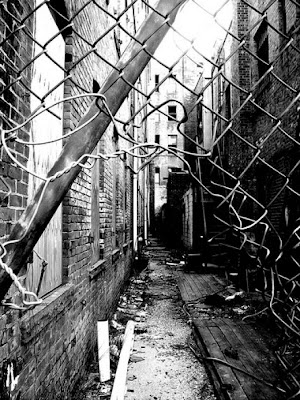In every narrative work the suspense, tension and excitement work together to craft the perfect thriller, an amazing ride that keeps the audience entranced. Seldom does the creator view their work complete in one ride, almost every writer views the work as but a piece of a larger story.
While motivations for expanding a piece can range from the monetary to an intentional overarching theme or an overarching theme. There are also a multitude of ways to craft a series from the components of their first ride. Less common is developing additional stories based upon secondary characters from the first work and expanding into their own works. Another more frequent method of expanding the ride is to simply apply all of the original elements to another track. Taking the same characters and dropping them into another plot. These methods are quite prevalent in novellas, TV and even most sequels to the original piece. These are not, however, the true foundation for the Epic.
"The first chapter sells the book; the last chapter sells the next book." - Mickey Spillane
 |
| Photo Credit |
There are a number of components that need to be kept in check when crafting a true series that can expand across multiple rides culminating in one grande experience. The Epic is not only a series but an artfully woven piece that allows each component to stand on it's own as well as hold it's place in the larger narrative. This is analogous to crafting one large ride with such detail that it would be impossible for the audience to find the seams between the pieces.
As every journey begins with a single step, the same is true of the foundation for the series. The first narrative introduces the characters, setting and a problem that can be solved within the confines of the first ride while hinting at a larger arc. This is the same as crafting a 'hook' in the first piece. It draws the audience and leaves them wondering what comes next. The largest issue in crafting this element is maintaining the cohesiveness of the solitary ride. If the first piece ends with a less than satisfying ending to tie-in the next ride it will greatly reduce the chances of having the audience continue on to that next ride. The balance of the Thriller elements needs to be complete.
The subsequent steps in the series behave as the consistent thrilling ride with multiple twists, turns, ups and downs. Each narrative in this greater piece can focus on a multitude of sub-events that help the audience explore the world and characters through various trials. These serve to develop characters and demonstrate their place in the world, each is a complete ride in-of-itself yet they hint at something larger.
The timeline of a series is very fluid and often has been subject to influence from publication. While a piece can be constructed in such a way as to move through periods of time out of internal chronological order the strongest come from a consistent sense of progress. Typically timelines for installments in a series have gaps between those installments varying from months to years. These gaps permit writers to 'refresh' characters and even add additional elements to each new installment. The failure of this pacing is the audience may forget the previous ride and the Epic will lose some of its impact. Some series actually carry the narrative from one to the next with no time in between installments.
An Epic is defined by the over arching plot or theme that the audience needs to experience on a small scale before they finally reach that conclusion at the end of the series. Because the satisfaction of the excitement must match the suspense and tension of the ride, many series focus on a grande-scale world changing event. Like Tolkien's Lord of the Rings series, the characters start on a small-scale adventure and end by changing the world. A great many Urban Fantasy and Thrillers rely on these as the tropes to make an Epic series. Just as many also fail because they do target such world shifting problems that breaks the audience's connection with the ride. Believability falls to the wayside and there is no recovering. Not every Epic needs a world changing event, it can still be as small as changing the world of a single character. In the series Veronica Mars, the entirety of the first plot arc centered on finding the true killer of the main characters' best friend. The arc did not change the world but changed the world for the protagonist.
Crafting a perfect thrill ride that keeps the audience enraptured can be a challenge to keep that tension and excitement balance. The key to crafting the Epic is scaling. Every component is a cohesive thrill ride set at a given scale that alludes to something that drives the characters. Rapidly shifting scale from one installment to the next can break believability and sever the connection between audience and attraction.










